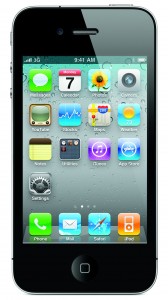In Belgium, a revolutionary new technology is now in use. This technology is known as PingPing, and I believe that it is going to change the way we all pay for things.
 Smartphones are becoming evermore popular by the day, and the Belgian telecom operator Belgacom, is now providing a service which is capitalising on this change. They are providing users with a way to connect their wallet to their phone.
Smartphones are becoming evermore popular by the day, and the Belgian telecom operator Belgacom, is now providing a service which is capitalising on this change. They are providing users with a way to connect their wallet to their phone.
Okay we have seen this sort of thing happen before right? Google Wallet and others have tried to bring your wallet and your phone closer. PingPing is something completely different though, as it turns your phone, into a portable bank account – quite literally!
What is PingPing?
PingPing is a system whereby you create a PingPing account, credit this with money from your bank account, and then wherever you go, you can access this at the push of a button, or swipe of your phone, and pay for almost anything.
If you are out and about, you can pay for your car parking simply by sending an SMS. You can buy your sandwich with a swipe of the PingPing electronic tag on your phone. You can pay for your online shopping by texting a code to a given number. You can even text money to friends, which is credited instantly. Owe someone a tenner? They can have the money in their PingPing account in five seconds (quite literally) and all you need do is text it to them.
How does the PingPing service work?
With PingPing, you are able to make payments from your smartphone, by texting, or even easier, simply by swiping your phone on a PingPing reader.
Say for example you want to buy a drink from a vending machine. Usually you would have to fumble around and find some coins, only to discover the machine doesn’t give change, right? Well with PingPing, all you would need to do is swipe your phone on the machines PingPing tag detector, and it will link straight to your PingPing account – which you can easily top up with a bank transfer. This means that you can buy your drink within seconds, and the money is removed directly from your account. No loose change, no hassle. Confused? Watch the video below to see my example in action.
In the past, we have had to wait to get paid, checks can take days to clear, as can bank transfers. With PingPing, you are able to transfer money in (quite literally) 5 seconds, and all you need is your phone.
This technology is not just limited to vending machines though! With PingPing you can pay for anything – which is PingPing compatible. As I mentioned earlier, your sandwich, car parking, online shopping, in-store shopping, your bus fair, even charging your electric car, quite literally anything!
Can I use it?
There are many similar services to PingPing, which are live. I have heard that in the UK, Barclays bank are trialling such systems, and in Africa, there are many similar systems which have really taken off.
PingPing is currently only available in Belgium though. The software and technology is still relatively new, but I think it will spread fast.
Your Turn
What do you think about the PingPing service, will it take off elsewhere? Will it be a revolution, or is there too much competition already? Your thoughts, comments, opinions and facts are welcome as always 🙂

